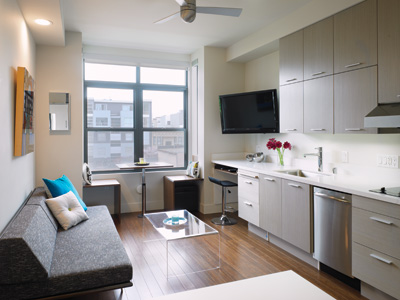
Photo: Panoramic Interests
Evidence Based Strategies
- Reduce exposure to noise pollution for building occupants. For example, incorporate acoustically designed walls, doubleglazed windows, and wellsealed doors.
- Minimize exposure to noise pollution in outdoor spaces. For example, plant earthen berms with grasses and shrubs or incorporate evergreens and plants with thick, waxy leaves to absorb sound.
- Minimize sources of noise pollution where possible, for example, by using quiet asphalt overlays on roads.
Best Practice Strategies
- Place more active rooms (such as kitchens) in locations that buffer sounds from rooms where noise is more problematic (such as bedrooms).
- Use green roofs, which can absorb noise and reduce outside sound levels by up to 40 to 50 decibels.